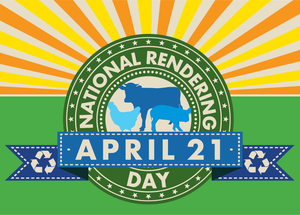Farm Bureau says USDA’s highly erodible land and wetland conservation final rule leaves farmers “powerless.”

The U.S. Department of Agriculture published its final rule on determining whether land is considered highly erodible or a wetland, integrating input from the public and making updates in accordance with the 2018 farm bill. This final rule follows a focused effort by USDA’s Natural Resources Conservation Service (NRCS) to improve consistency and use of science in making determinations.
However, the American Farm Bureau Federation criticized that the rule leaves farmers “powerless” to fight back against the government.
NRCS acting chief Kevin Norton said, “Feedback is a very important resource, and we appreciate all of those who help us improve how determinations are made. Highly erodible land and wetland determinations are the gateway to USDA programs, and we strive to provide the highest quality technical assistance to inform decision-making by farmers and ranchers.”
To be eligible for most USDA programs, producers must be conservation compliant with the highly erodible land and wetland provisions. These provisions aim to reduce soil loss on erosion-prone lands and to protect wetlands for the multiple benefits they provide.
The final rule was made available for public inspection Aug. 28, and it will be published in the Federal Register. This follows an interim final rule published Dec. 7, 2018.
This final rule confirms most of the changes made by the December 2018 interim final rule and makes these additional updates:
Adding the requirement of the 2018 farm bill that USDA will make a reasonable effort to include the affected person in an on-site investigation conducted prior to making a wetland violation technical determination;
Further clarifying how wetland hydrology is identified for farmed wetlands and farmed wetland pasture;
Adding clarification to the consideration of best-drained condition for wetland hydrology in keeping with the definition of prior converted cropland, and
Relocating the provision that wetland determinations can be done on a tract, field or sub-field basis in order to improve clarity.
The Farm Bureau had advocated for clear rules and safeguards to ensure fair treatment of farmers in conservation compliance, but the final rule does not remedy unfair enforcement by NRCS. The Farm Bureau has been outspoken about the agency's abuse of powers, including cases involving farmers David Boucher, Kurt Wilke, Brad Smith and Charles Hood.
When Wilke’s father-in-law, Carl Hoffee, wanted to expand his central Illinois farm in 2010, he purchased 80 acres of land on which crops had been grown for more than 100 years – land that USDA’s forms verified as non-wetland. However, soon after Hoffee began improving the farm’s drain tile system, NRCS asserted that the farm had 22 acres of wetlands. The assertion, based on undated aerial photographs taken on a single day, forced Hoffee to stop his drain tile repairs and await the agency’s formal determination, which came in 2012.
Wilke spent nine years fighting in the courts, with four wetland designations and four landowner appeals and wins.
Hoffee and Wilke not only had the facts on their side, but unlike most other farmers, they had the benefit of being attorneys who could represent themselves in preparing and making their case. Still, as Wilke emphasized, it’s an expensive and daunting process.
“This cost us hundreds of thousands of dollars to go through that five-year battle. These appeals also cost the farm almost $100,000 for technical experts and consultants to map and scope the entire drain system. We even had to hire and pay our own court reporter to take the transcript at all these hearings,” Wilke said.
Following the USDA rule release, Farm Bureau president Zippy Duvall stated, “After decades without a finalized rule in this area, we finally have one, but unfortunately, it falls short.”
Duvall added, “Farmers deserve a fair process and clarity, including an understanding of the exemptions authorized by Congress. They deserve to be protected from repeated, unjustified, costly decisions by NRCS. Although we appreciate recent actions by USDA to rectify historic wrongs, this was a missed opportunity to ensure fairness going forward.
“We will continue to examine this rule and our options to address its shortcomings,” Duvall said.
NRCS recently updated its conservation compliance webpages, adding highly erodible land and wetland determination resources for agricultural producers by state.
About the Author(s)
You May Also Like


.png?width=300&auto=webp&quality=80&disable=upscale)
.png?width=300&auto=webp&quality=80&disable=upscale)

